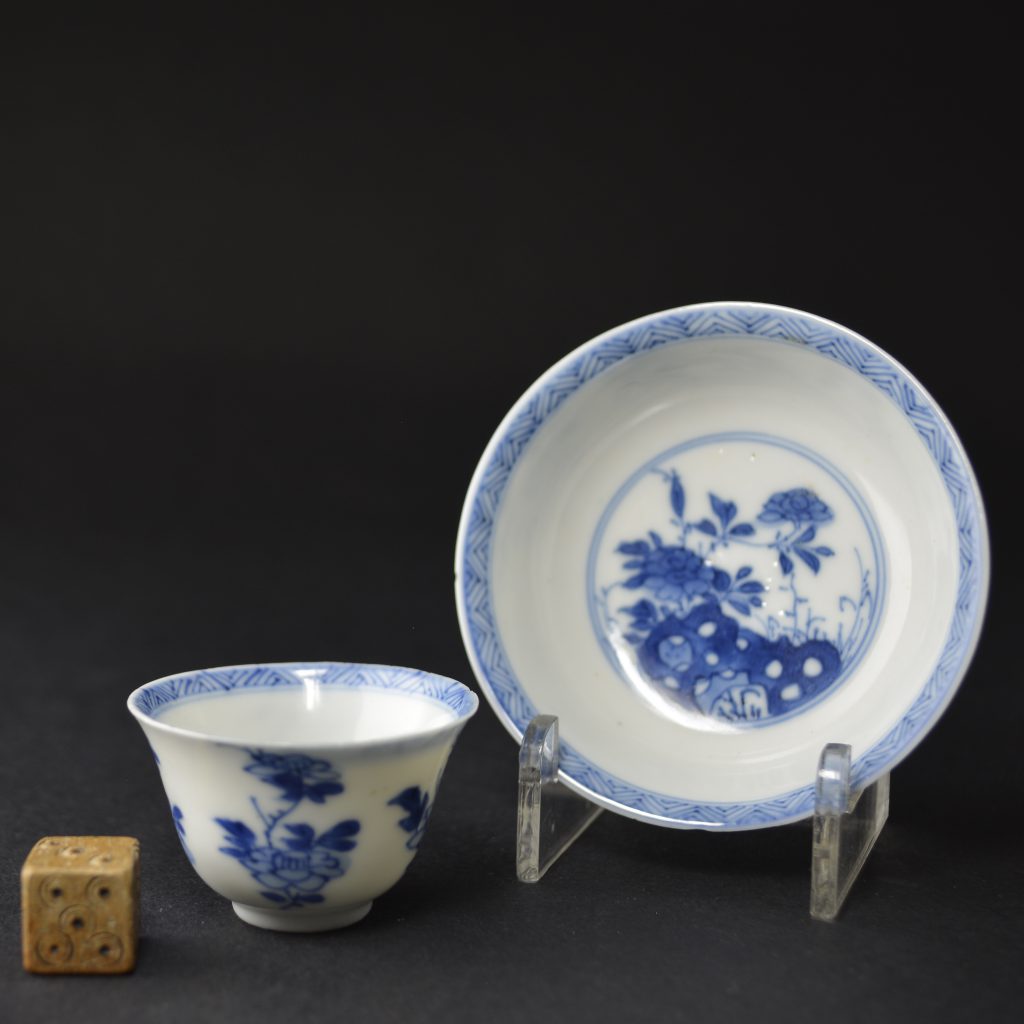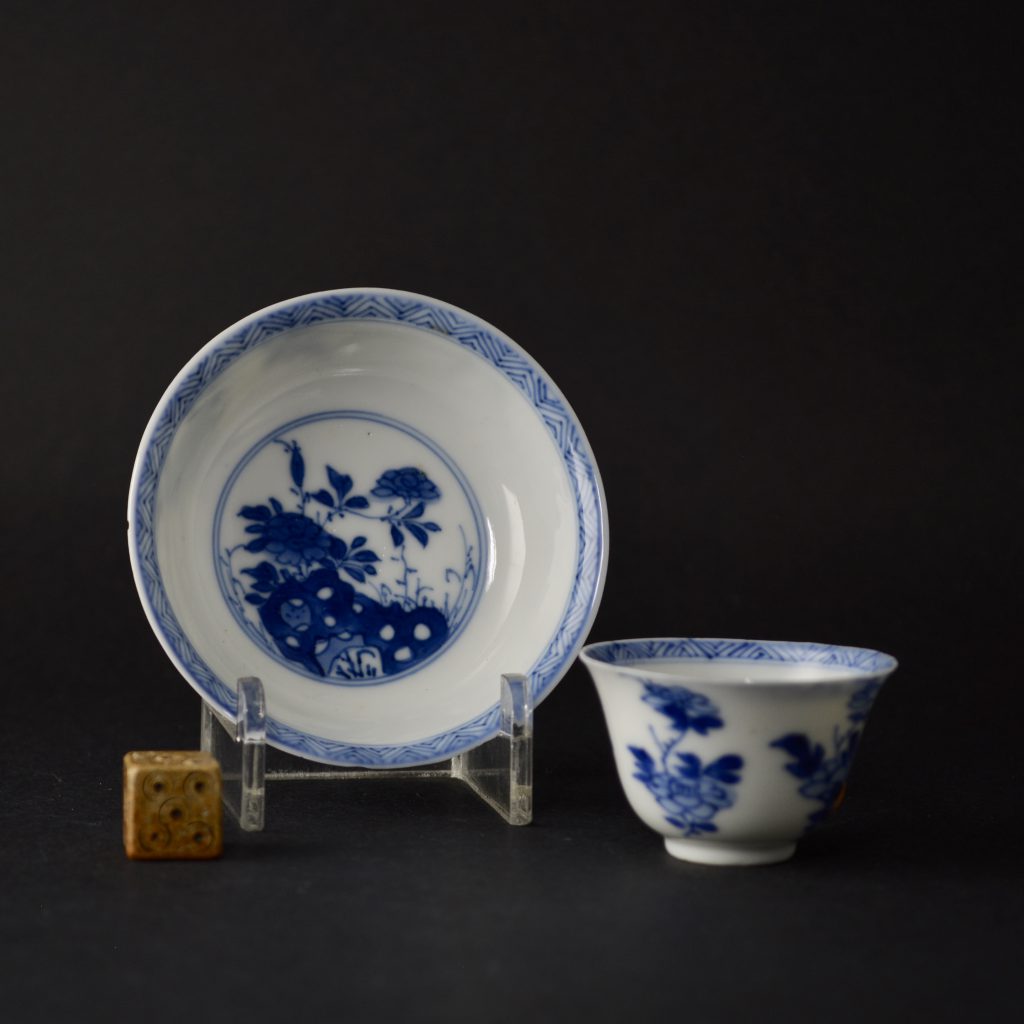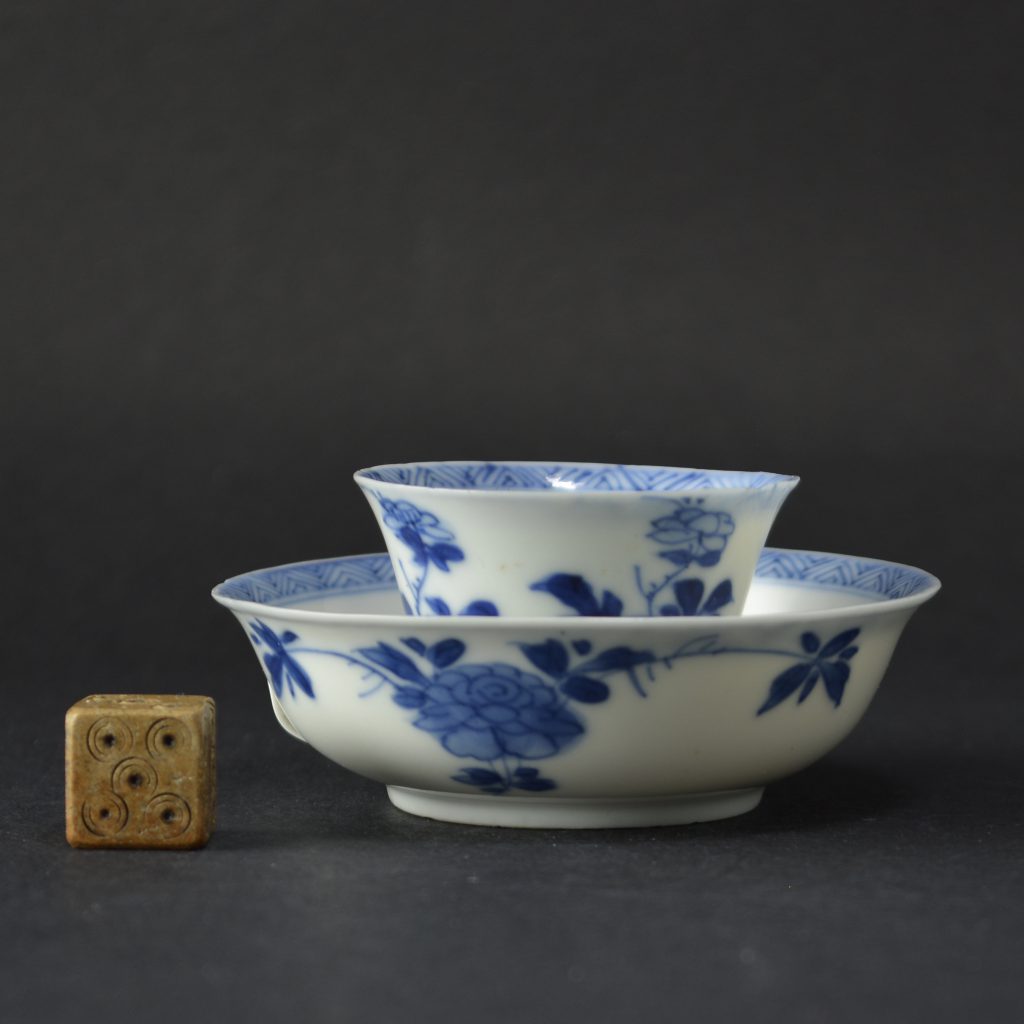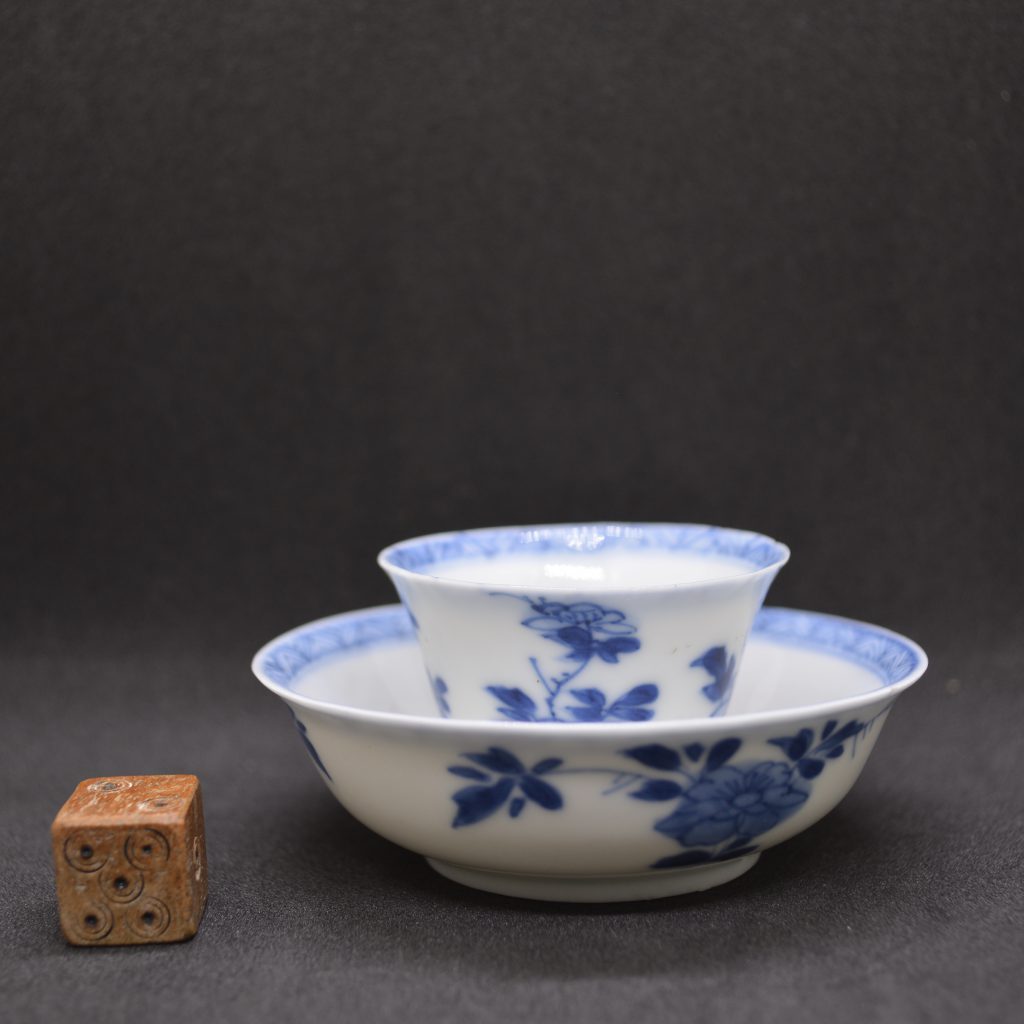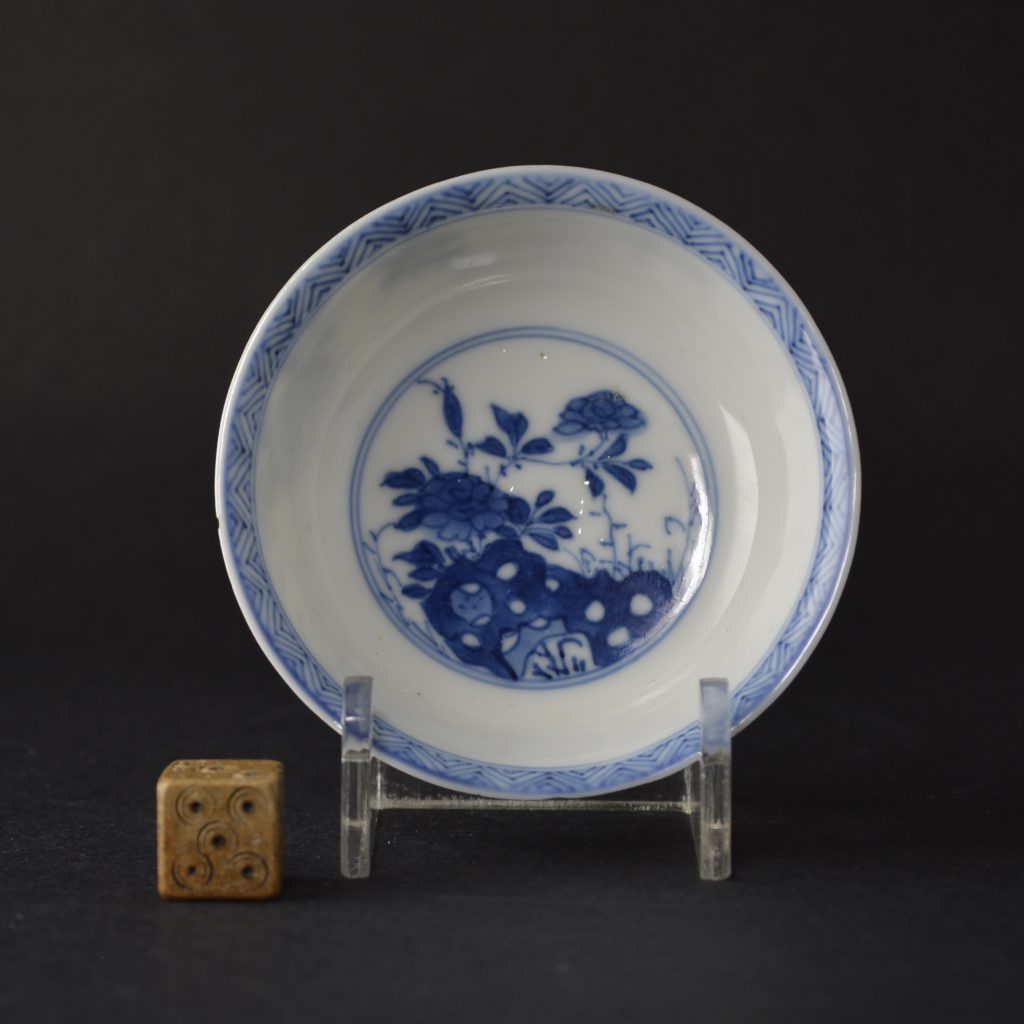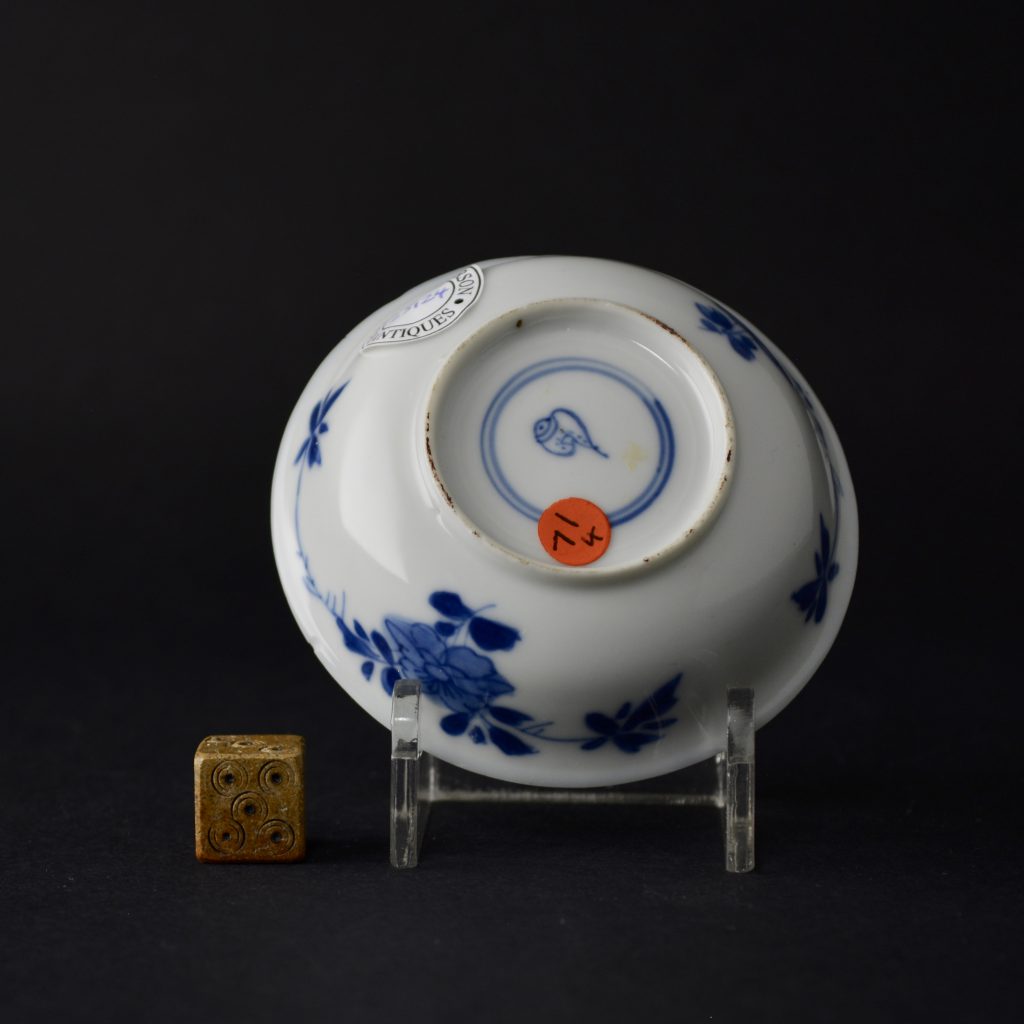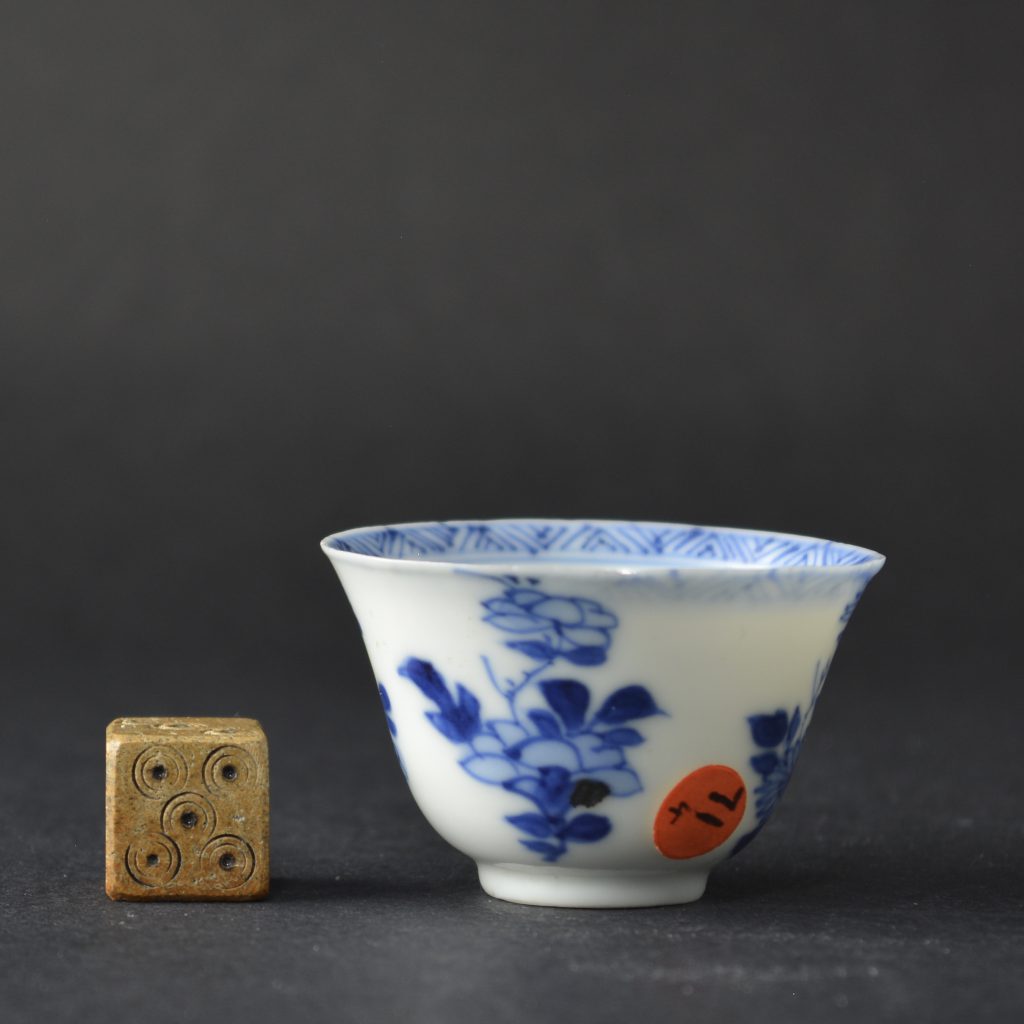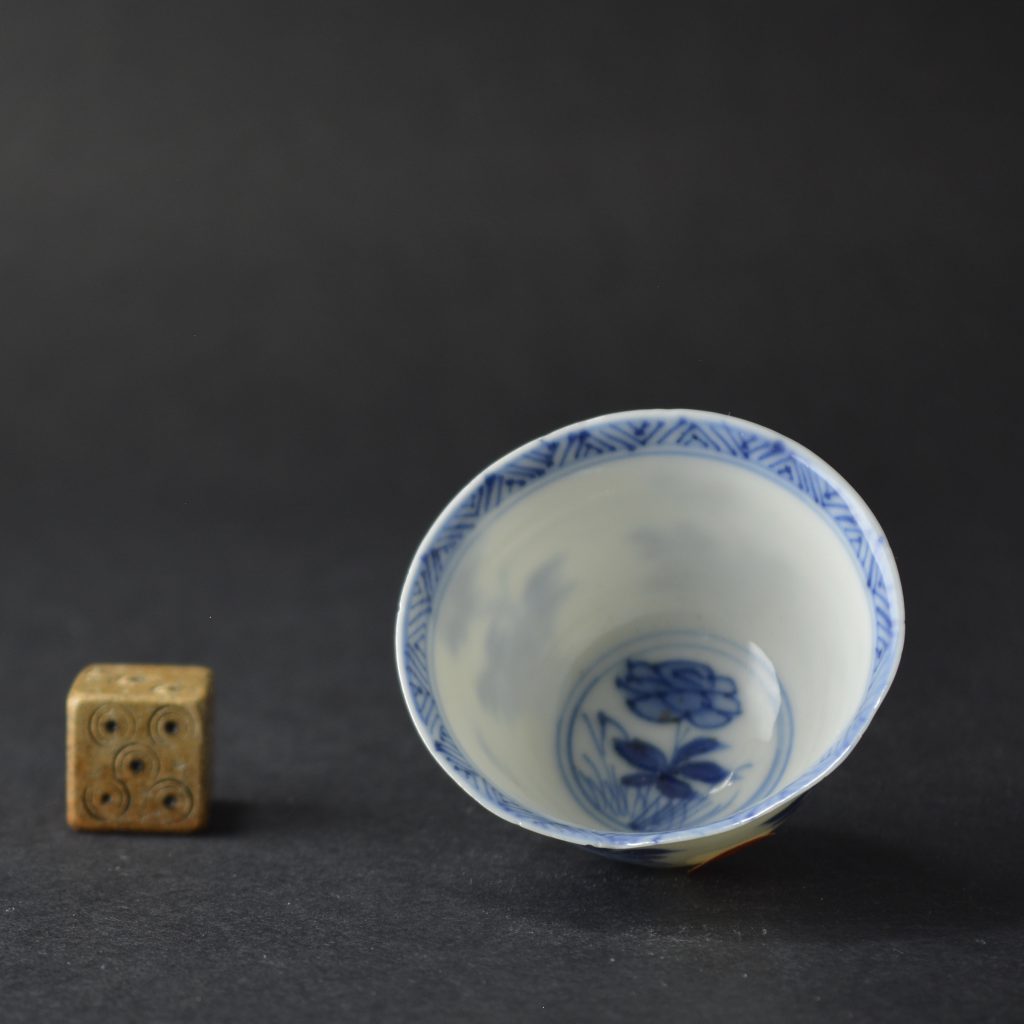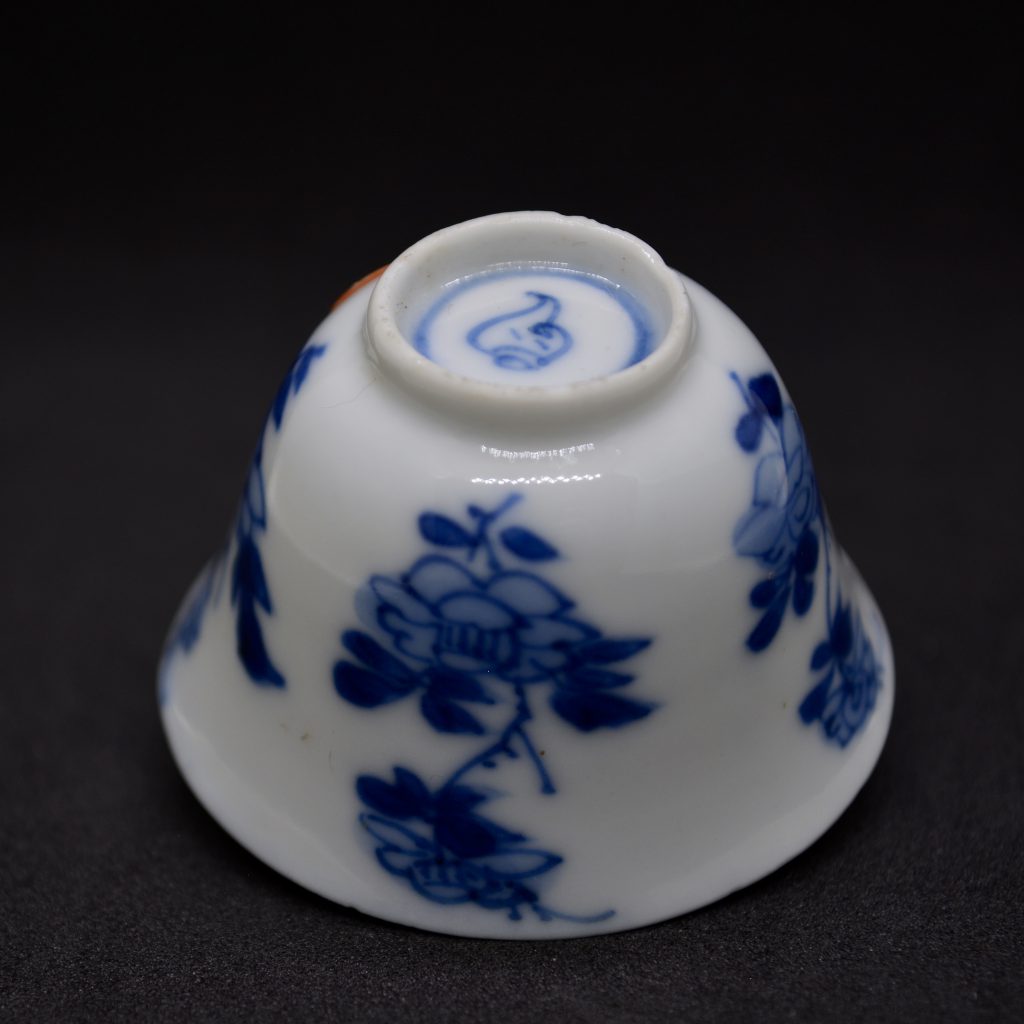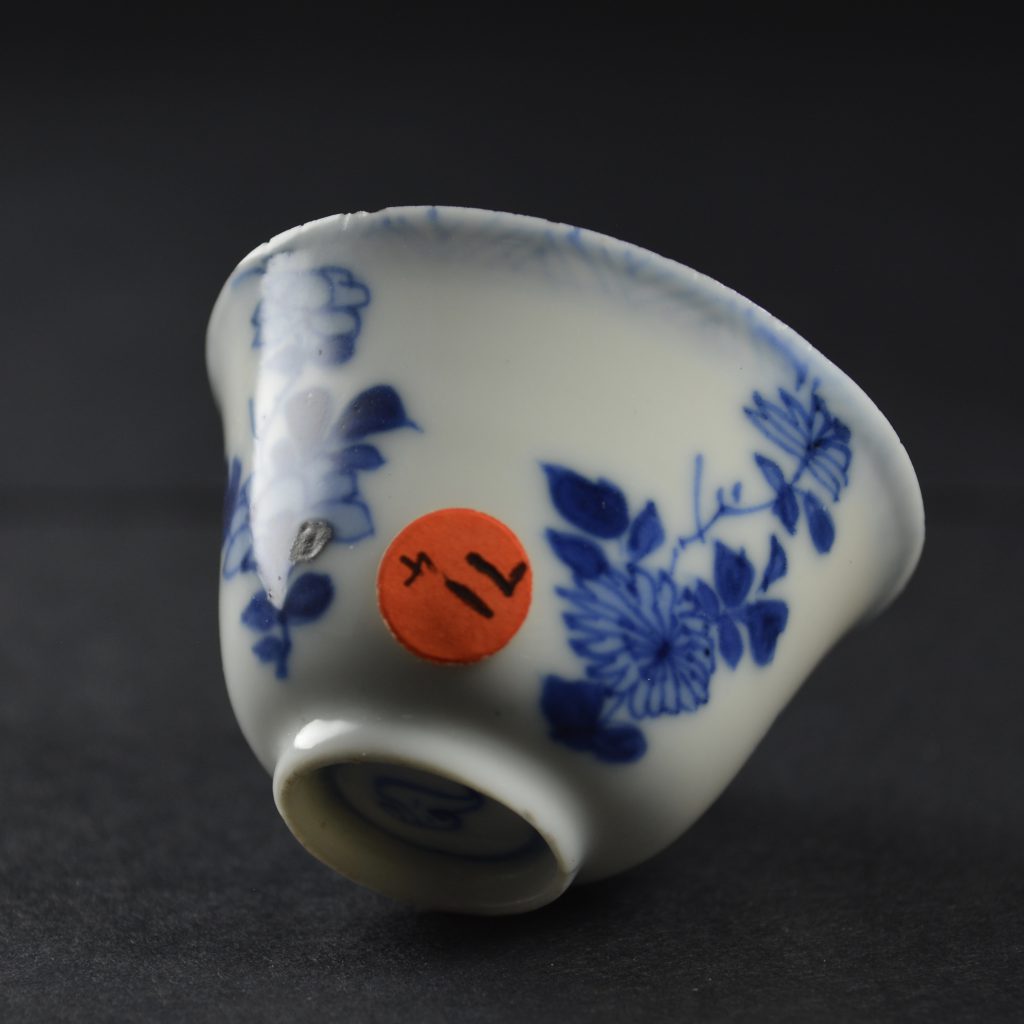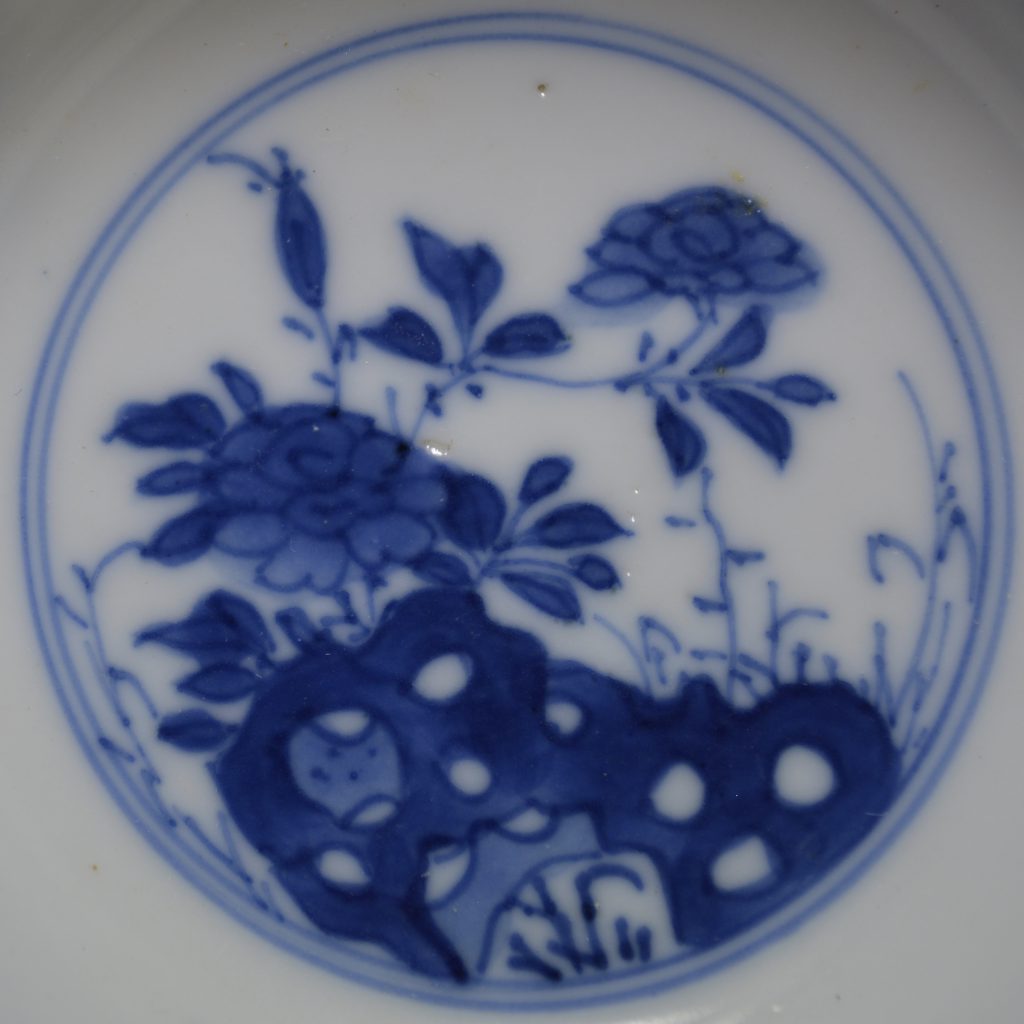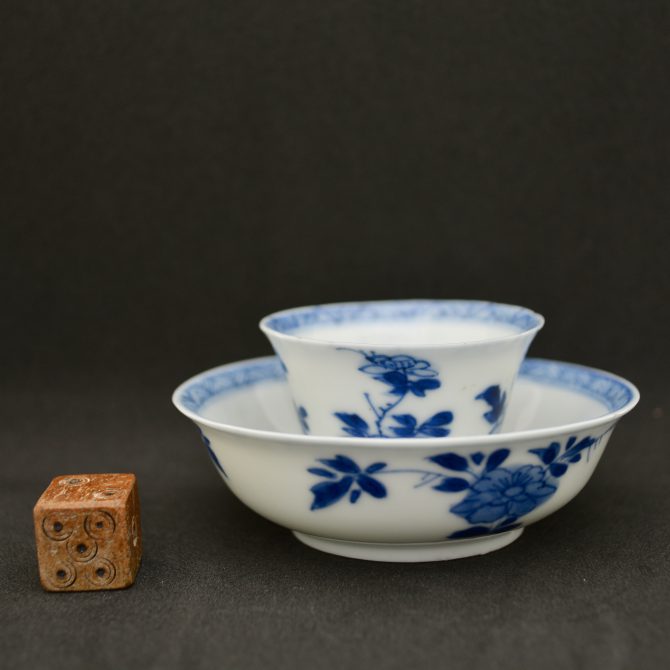
Kangxi Porcelain, A Miniature Teabowl and Saucer c.1700
A miniature Kangxi Porcelain teabowl and saucer c.1690-1710, probably made for the Dutch market. This tiny Chinese teabowl and saucer is finley potted with extremely thin edge to the teabowl. Painted in a good tone of cobalt blue the simple design consists of flowering plant. The base of the teabowl and the saucer has a conch-shell mark.
SOLD
- Condition
- In excellent condition, some fritting.
- Size
- Diameter of the saucer : 6.5 cm (2 1/2 inches) Diameter of the teabowl : 4 cm (1 1/2 inches)
- Provenance
- Robert McPherson Antiques (purchased in Holland). The John Drew collection.
- Stock number
- 25124
Information
The John Drew Collection of Chinese and Japanese Ceramics :
John Drew was born in 1933 in Tideswell, Derbyshire, where his father was curate. The family moved to Norfolk whilst he was still a baby and his father became the rector of the parish of Intwood and Keswick. He was educated at Sedbergh School and after National Service in the R.A.F. being taught Russian, he went to Queens College, Oxford to read Greats (Classics). He spent nearly all his working life in various African countries as an archivist, moving to a post at Cape Town University in 1978. He remained in Cape Town after his retirement until his death in 2006. He had a great love of the English countryside (but not the climate) and this is shown in many of the pieces he collected. His taste was varied and ranged from Neolithic right through to the 18th Century. When we sent photograph to his home in Cape Town of pieces we thought he might be interested in, he would write long funny well observed letters back, wanting to add many of the items to his growing collection. Over the years we got to know him better and better, and during the last few years it was very rare for him to not want all the pieces we offered him. We knew his taste, even though his taste was so varied. This was in no small part because he had a very good eye and it was a pleasure finding things that interested him, because they were also very interesting to us. He never got to put his collection on display, something he hoped to do while on retirement in England, so it is with a mixture of pleasure and sadness that we offer these pieces from his collection. Each piece has a John Drew collection label, so when the collection is split up there will be some lasting record of the love and hard work he put into his two decades of collecting.
Kangxi Porcelain Miniatures For The Dutch Market :
There is a long tradition in China of making miniatures, ordinary object made in a diminutive size. Clearly there there is a connection, as there is when one looks at miniatures from around the world, with children but they were also used as models for burial and possibly collectors too. Japanese and Chinese porcelain miniature porcelain objects were made for export to Europe and more specifically for Holland in the late 17th and early 18th century. Seen in a European context these miniature Chinese porcelain objects coincide with the production of miniatures in Holland made out of a great variety of material, but especially silver. Indeed there are thought to have been around 40 silversmiths in Amsterdam alone making these Poppengoed, miniature silver objects. Some were for children, but others were made for doll`s houses. In the 17th century these large, lavish models of the interiors of houses were made for wealthy women, often the wives of prosperous Dutch merchants. Chinese porcelain was used in the same way it would have been used in a full sized house, to decorate rooms and as functional objects. An example of which are the `Dolls House` vases of the Vung Tau cargo of c.1690 to 1700. Some Chinese objects were too difficult to make as miniatures, and when one looks at the magnificent doll`s houses in the Rijksmuseum in Amsterdam and else where in Holland you can see specially commissioned white Bohemian glass with trailed blue decoration was used to imitate Chinese porcelain.
